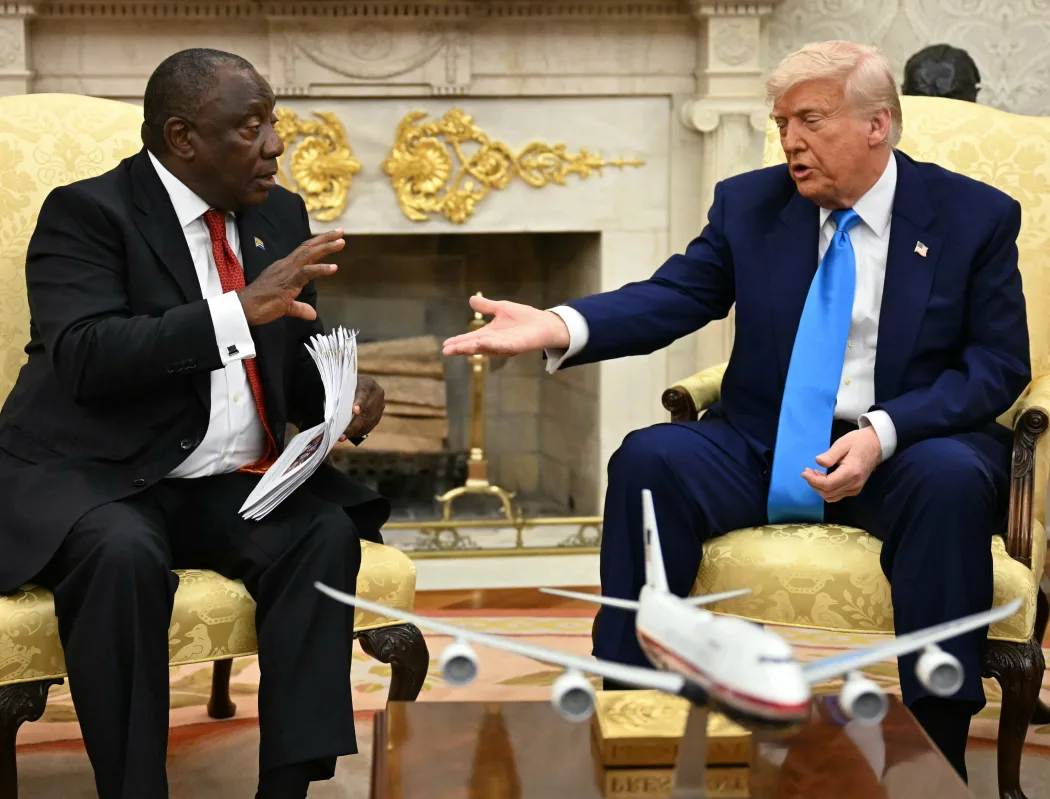South Africa’s exports to U.S. clients hit by higher tariffs as August activity eases
- South African firms exporting to the U.S report challenging trading conditions, particularly with American buyers due to higher tariffs.
- In August, President Donald Trump slapped South Africa with a 30% tariff, targeting the country’s auto and agriculture industries.
- South Africa says these tariffs threaten roughly 30,000 jobs in its economy.
Buyers of South African products in the U.S. have started feeling the pinch with new survey showing that tariffs are negatively affecting exports into the American market.
According to the S&P Global South Africa Purchasing Manager’s Index (PMI) while companies reported an uptick in fresh orders in August, the pace of growth lessened slightly from the previous month with U.S. clients fingering tough trading environment due to tariffs.
“Some firms reported securing new customers, while others highlighted low work levels and challenging trading conditions, particularly with US clients due to higher tariffs,” the PMI report covering August states in part. “In fact, growth seemed to be primarily driven by domestic demand, as order book intakes from abroad fell for the fifth consecutive month,” the survey notes in part.”
In early August, President Donald Trump slapped South Africa made goods accessing U.S. markets with a 30 per cent tariff, a move that has been targeted especially at the country’s auto and agricultural industries.
Read also: As US tariffs sting, AfDB’s Adesina calls for bold realignment of African trade
U.S. tariffs threaten 30,000 jobs in South Africa
Already, President Cyril Ramaphosa’s administration, which has brushed shoulders with Trump has warned that the negative impact of tariffs could wipe out 30,000 work opportunities.
Complimenting S&P Global’s observation on the knock on effect of U.S. tariffs on South Africa is Absa Group’s Purchasing Managers Index, which dipped to 49.5 in August compared to the 50.8 reported a month earlier.
Absa Group’s survey sub-index that monitors fresh sale orders nosedived to 47.4 points from 55.9 in July, while business activity decreased to a lower 45.8 from 47.1 a month earlier. What’s more, companies reported reduced deliveries from suppliers to 53 from a higher 56.4 in July owing partly to the negative impact of U.S. tariffs.
Meanwhile S&P Global survey shows that private companies across South Africa’s economy experienced a mild uptick in August–the first time since May–attributable to easing input costs even as new job opportunities declined.
According to the S&P Global South Africa Purchasing Managers’ Index (PMI), the headline index crossed over the neutral 50.0 threshold for the fourth consecutive month in August, registering at 50.1 down from 50.3 in July. This implies that the continent’s most advanced economy experienced a knock in business conditions in August compared to the month prior.
S&P Global’s readings above the neutral 50.0 signal an improvement in business conditions on the previous month, while readings below 50.0 show a deterioration.
“The easing of cost pressures for South African businesses is a positive sign for the private sector economy, suggesting that the acceleration seen in June and July may be temporary. Firms reported that the gradual improvement in exchange rates has begun to alleviate cost burdens on imported items, although rising prices for fuel and food remain a concern,” explained David Owen, Senior Economist at S&P Global Market Intelligence.
He added, “The latest data offers some hope that official CPI inflation may soften in August after reaching a ten-month high of 3.5 per cent in July.”
Production levels in South Africa’s private sector segment
During the month under focus, companies in South Africa’s private sector reported an uptick in production levels, an increase which was modest, but the second-quickest in two years (after May’s reading).
However, after two consecutive months of employment growth, new hires dipped slightly in August, as several companies opted not to replace departing staff.
Generally, firms in the survey panel of about 400 private sector players attributed the increase in output to improving demand and the initiation of new projects in the country.
Survey data indicated that input costs went up at the weakest rate in the current ten-month sequence of increases, with respondents attributing the slight improvement in the rand’s value against the US dollar because import costs for several items were reported to be on a downward trend.
However, there were some mentions of rising prices for inputs such as fuel and food across the environment. Additionally, wage pressures eased, with businesses reporting the softest increase in three months.
Read also: US tariffs hurting growth and development — African leaders
Share this content:





Post Comment